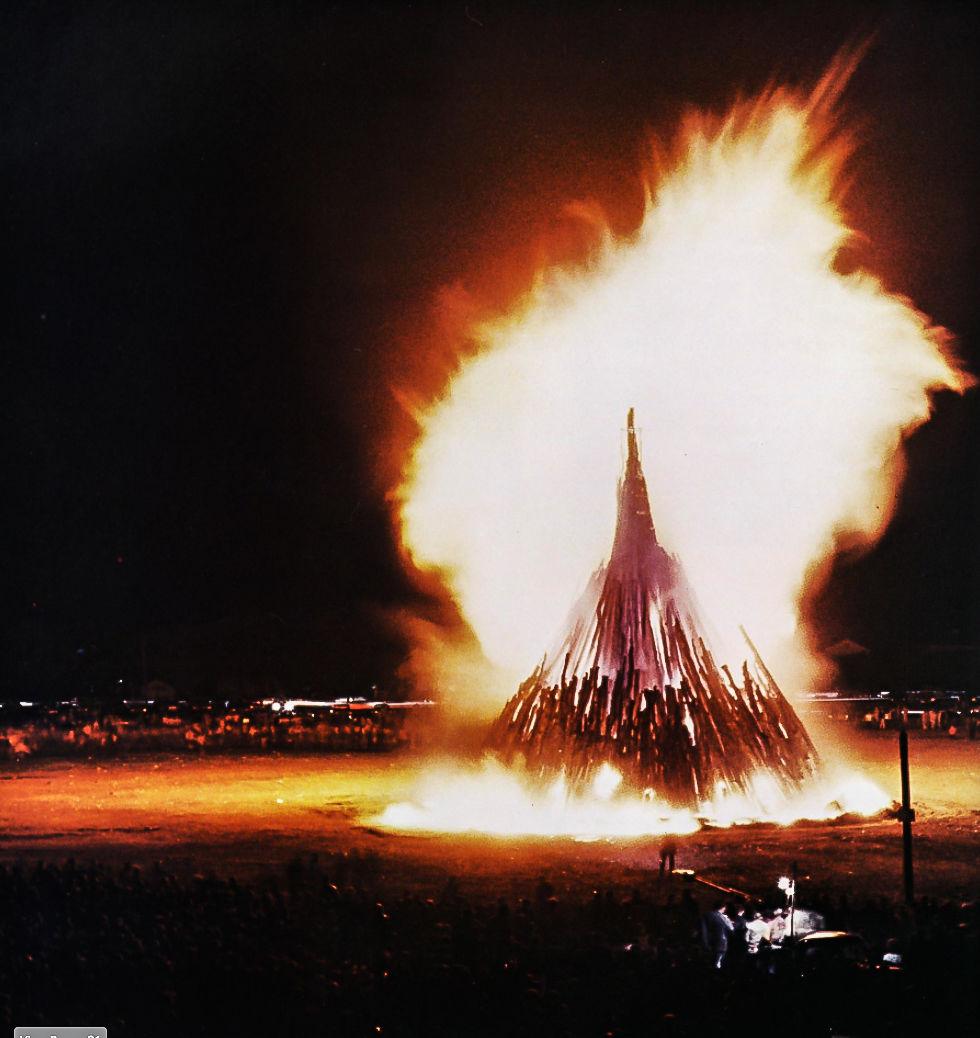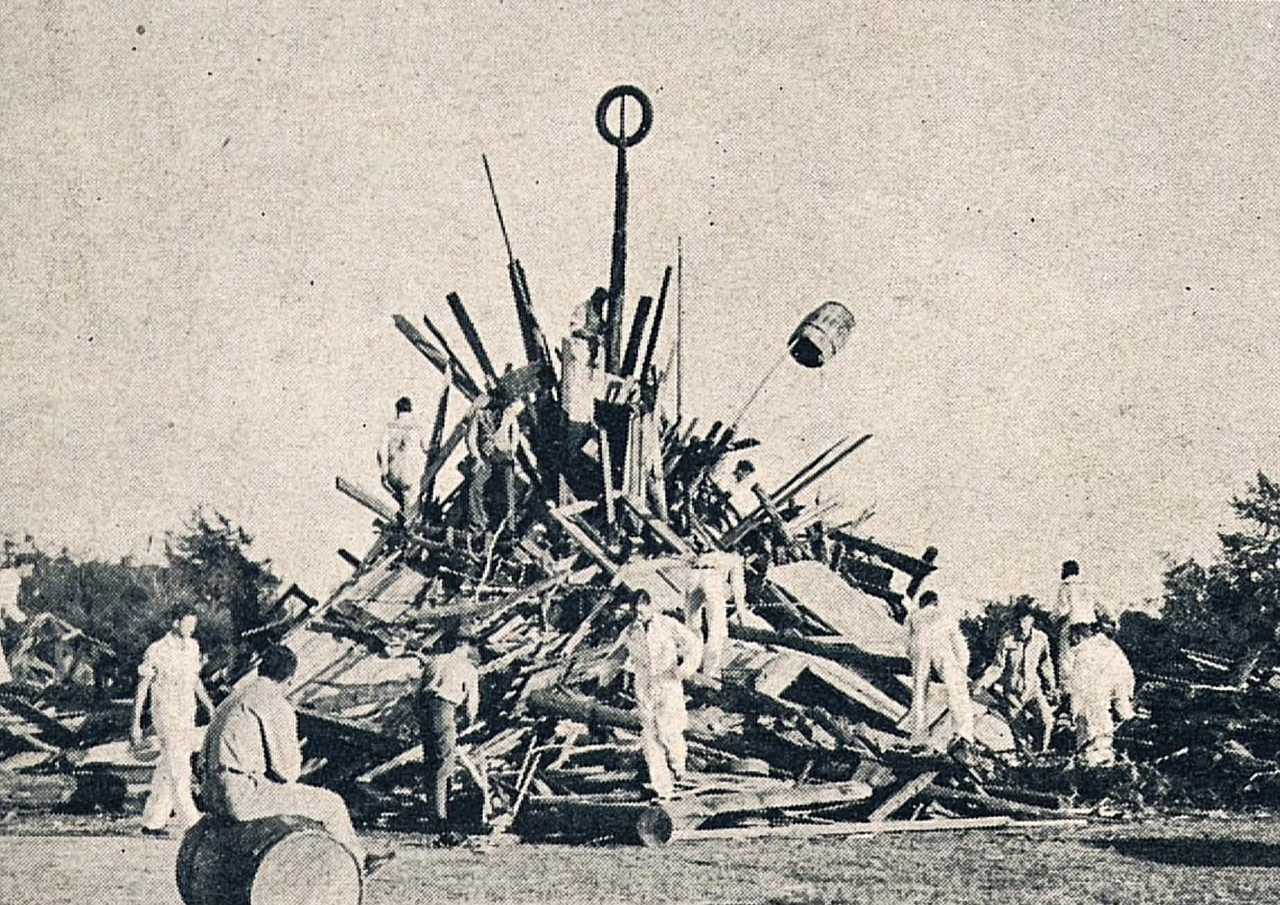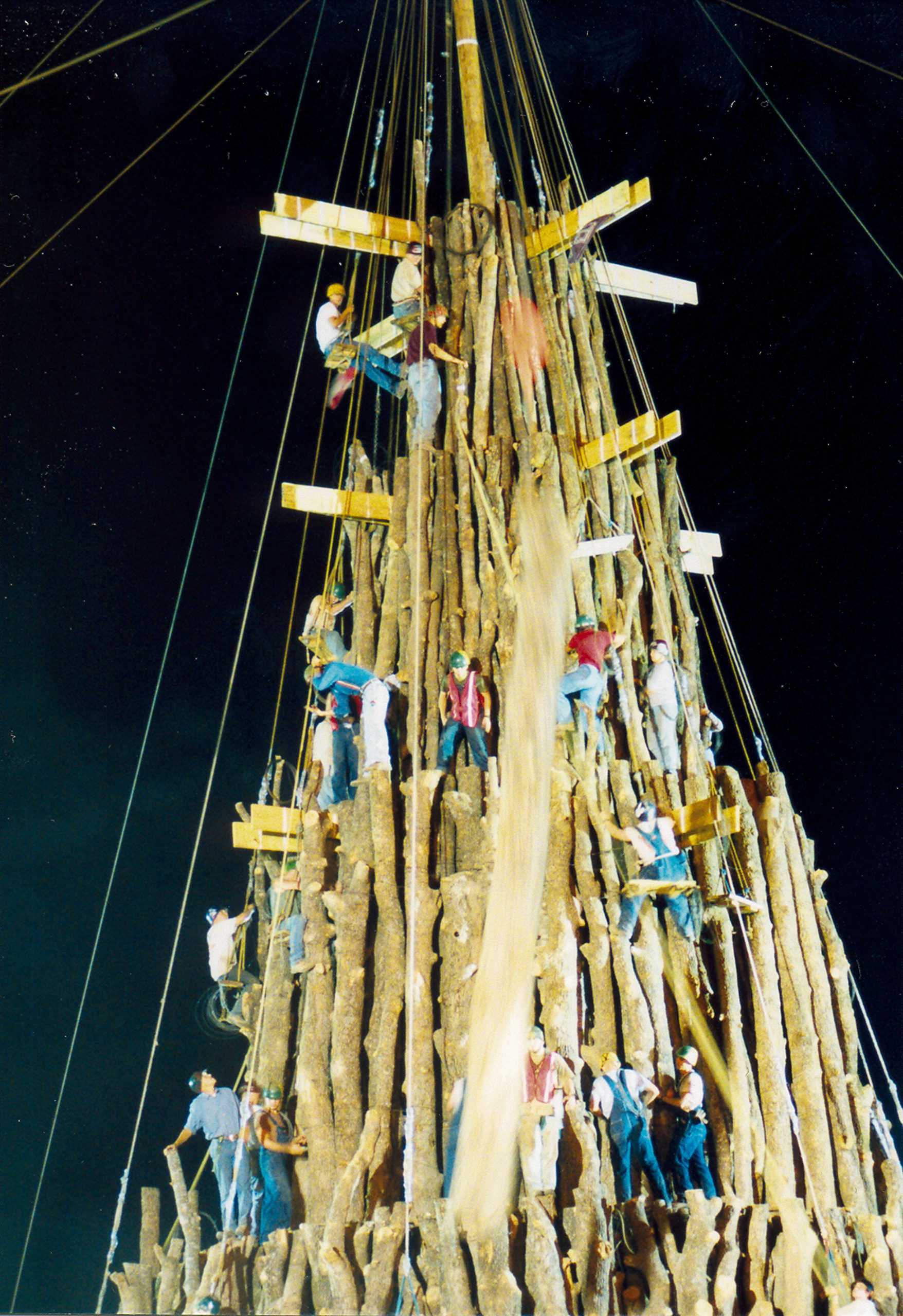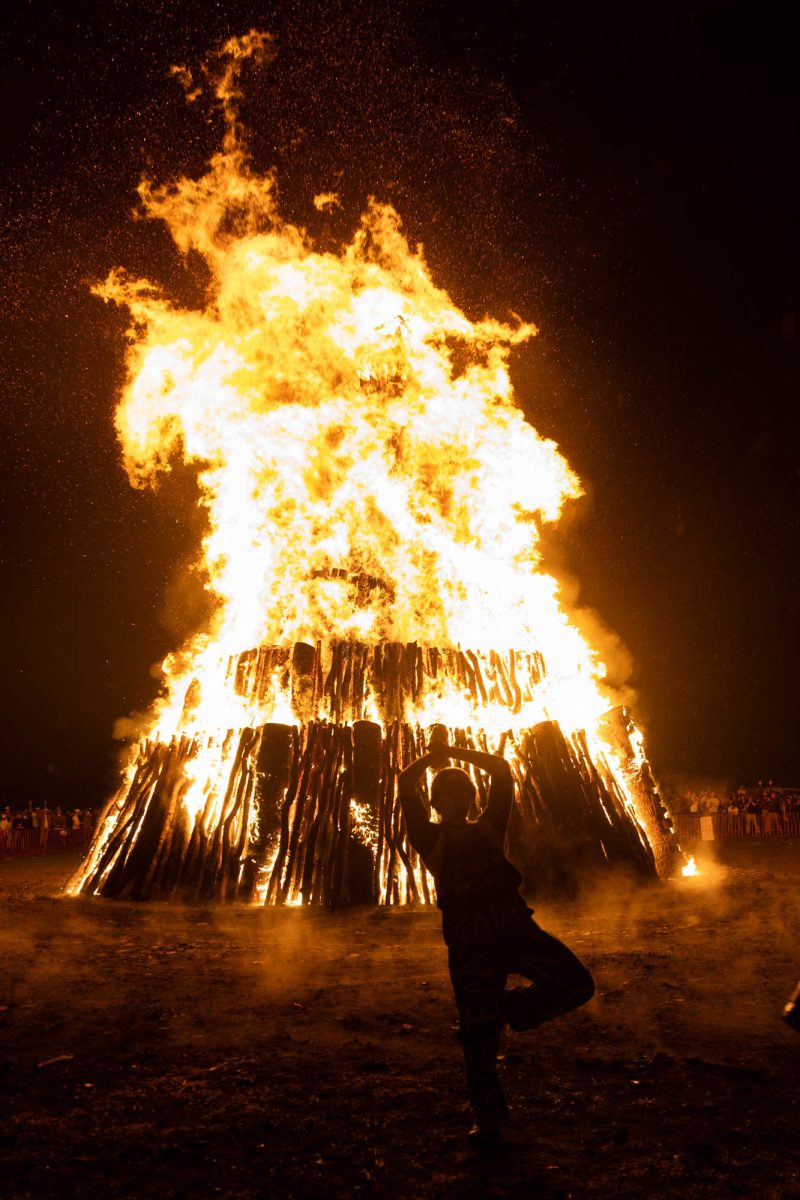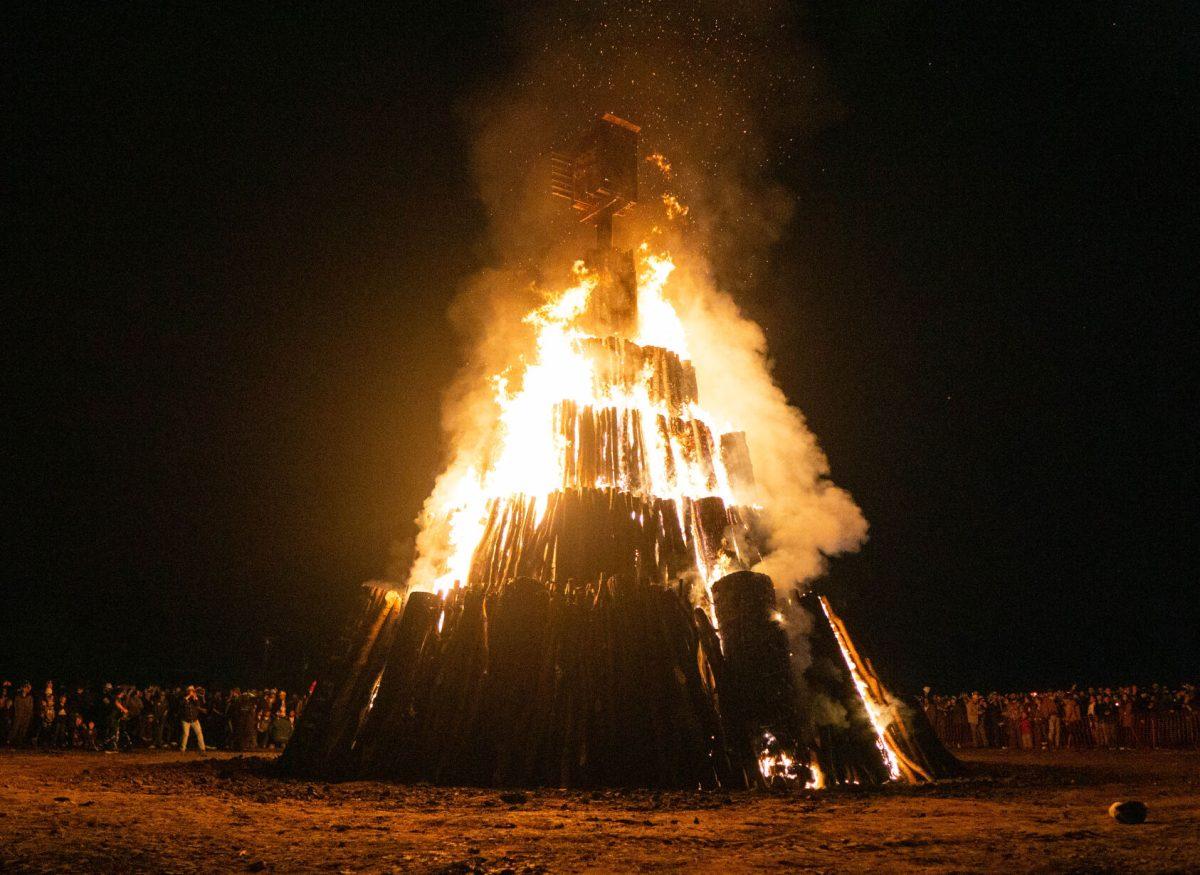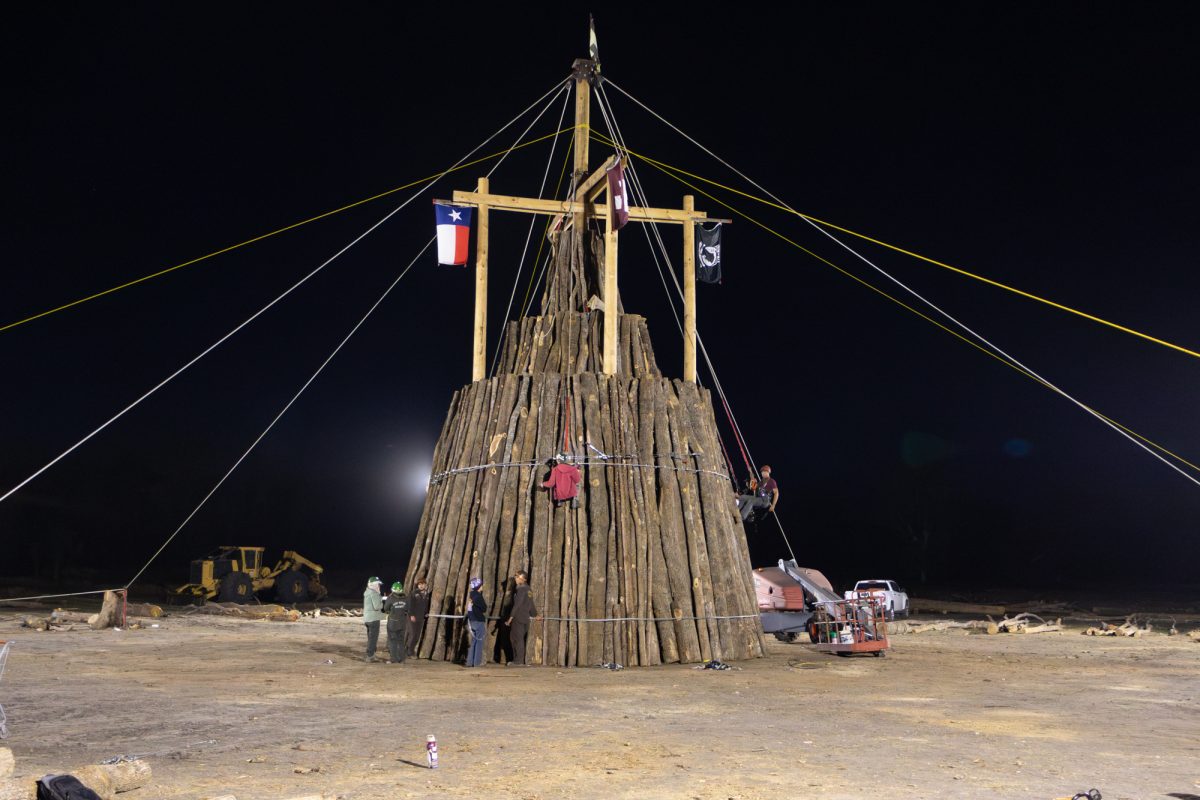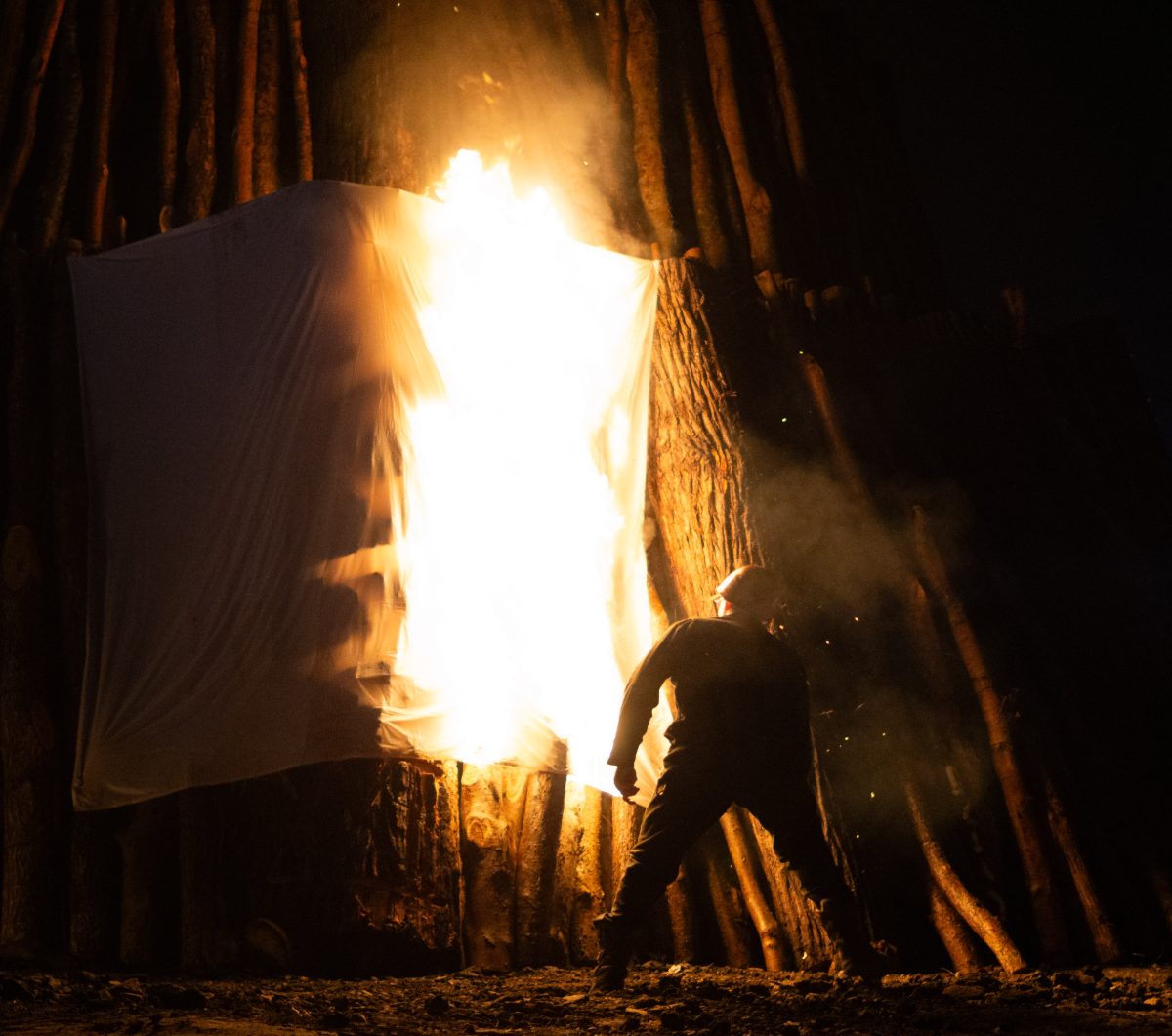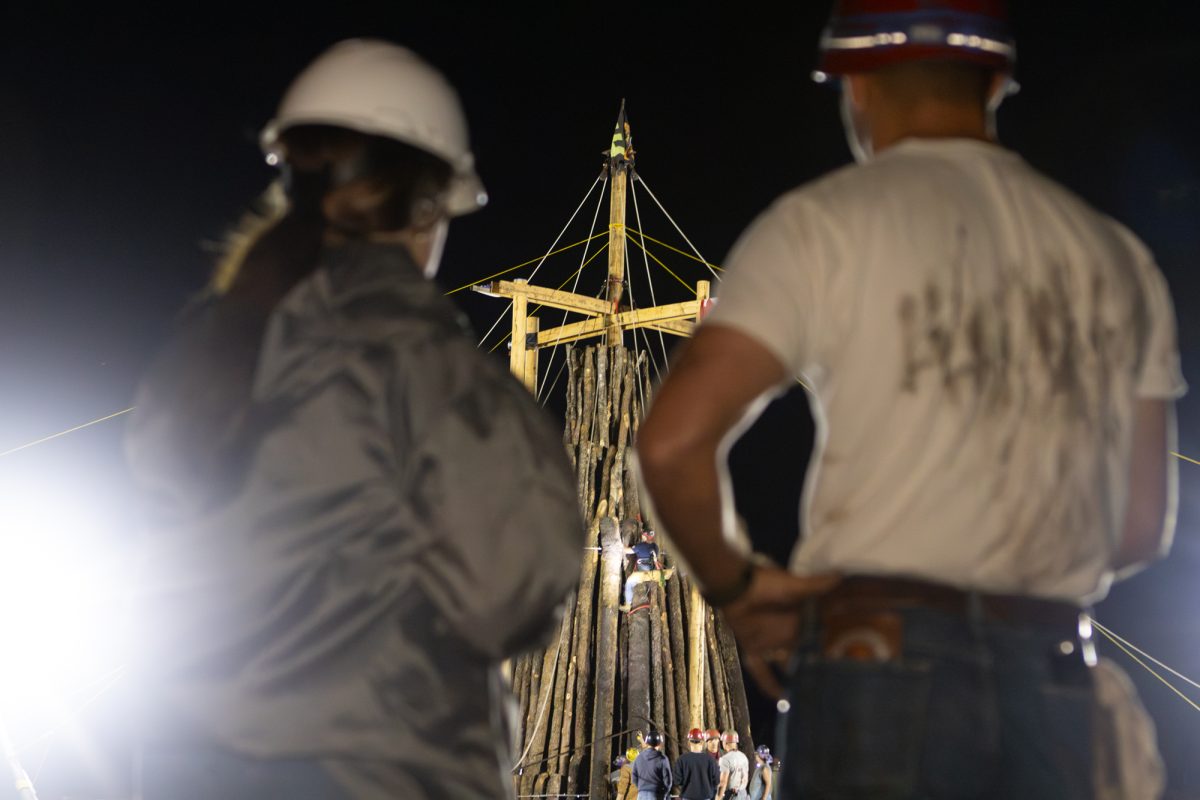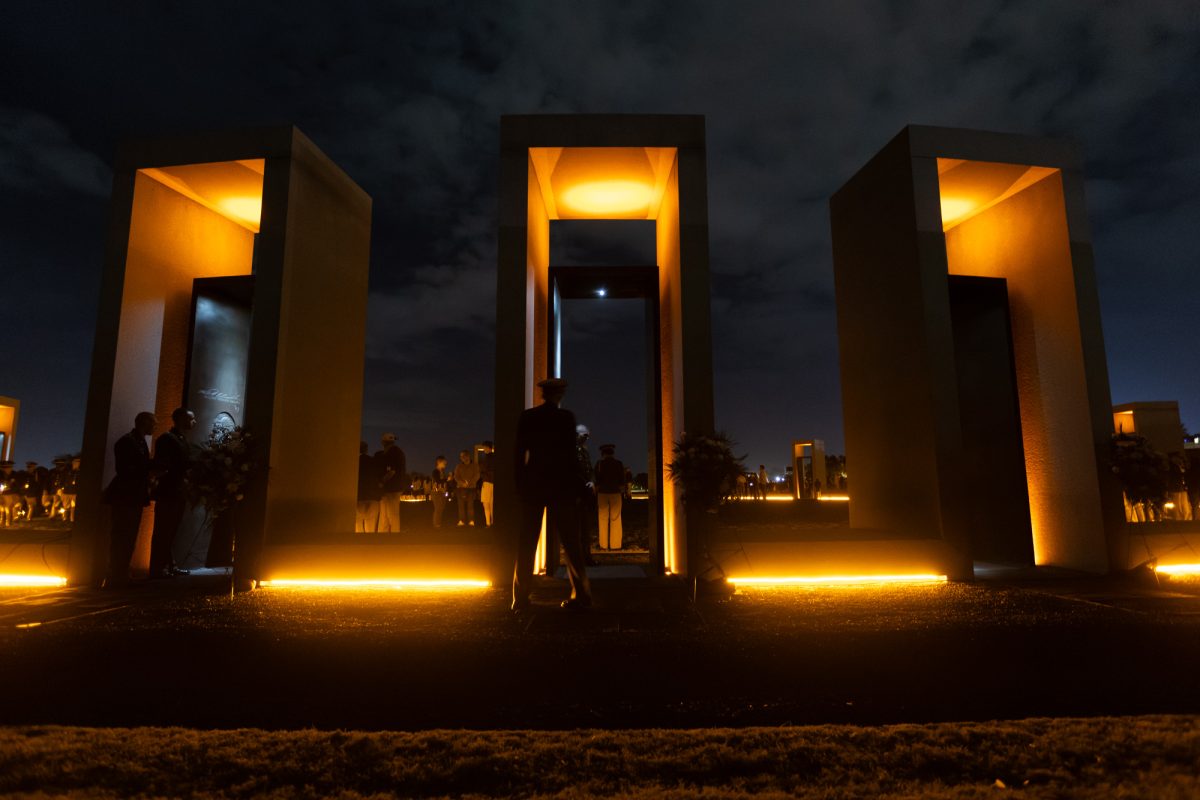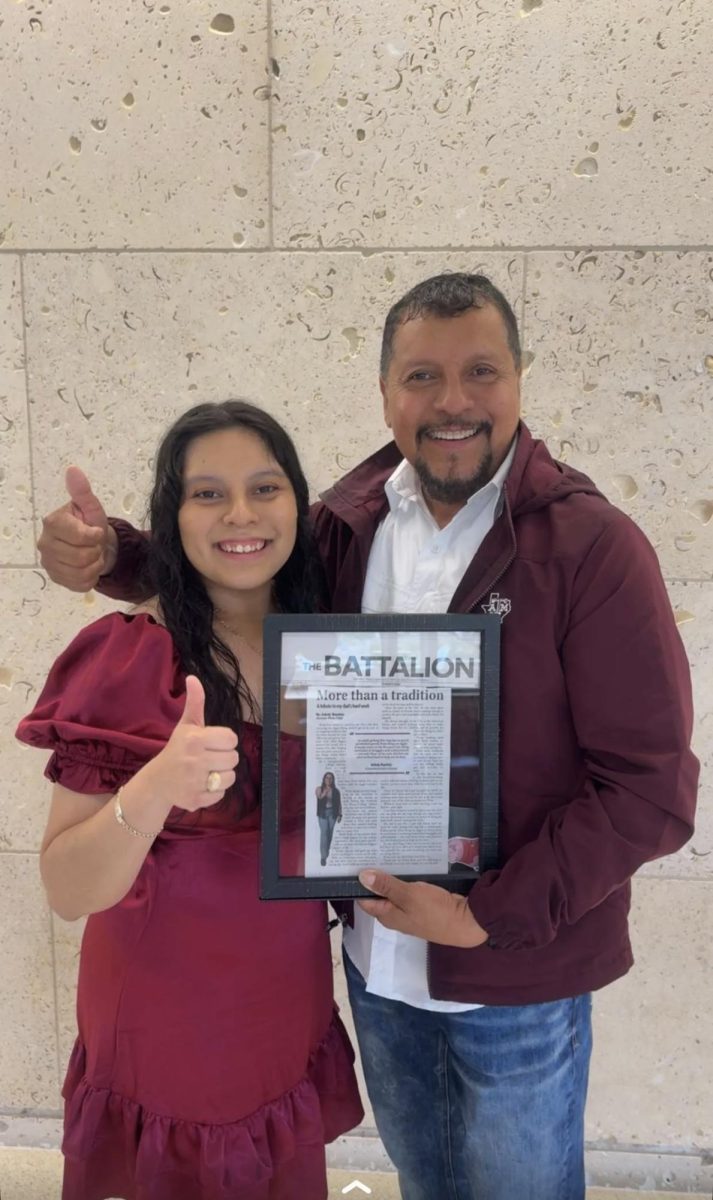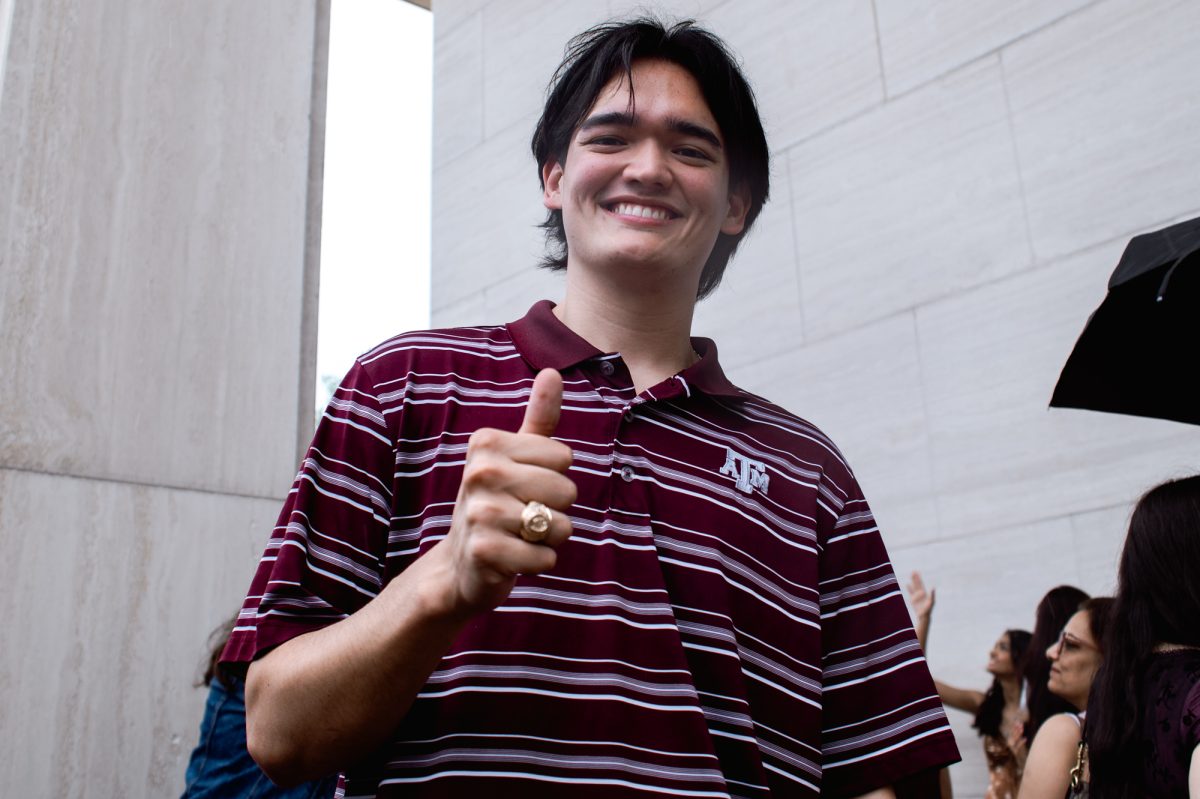The Aggie Bonfire was one of Texas A&M’s longest standing traditions. Usually done before the annual football game against the University of Texas. The tradition ran on campus from 1907 until 1999, when a tragic collapse resulted in 12 deaths and 27 injuries.
The first bonfire, consisting of trash and debris found nearby, was held on November 18, 1907, following a football win against the Tulane Green Wave. The tradition took hold from there, moving on campus in 1909. In 1919, when the A&M and Texas football teams began playing their rivalry games on Thanksgiving, Bonfire was moved to that time and served as a rally for the game.
In 1935, the university made Bonfire a school-sanctioned event, and in 1936 the university provided students with tools and transportation, while also helping them locate dead trees to cut down. In 1942, the design was standardized. Whereas past designs had been improvised, consisting of mostly stacking materials on top of each other, the new design resembled a teepee. This allowed for the bonfire stack to grow, reaching heights of 25 to 50 feet.
In 1955, Bonfire was moved from the Simpson Drill Field in front of the Memorial Student Center to the area outside of the Corps of Cadet dorms.
In 1965, participation in the Corps of Cadets became optional, marking a change in Bonfire leadership. Up to this point, Corps leaders had been in charge of construction and completion of Bonfire. However, with Corps membership no longer a requirement a new council known as Aggie Bonfire leadership was established resulting in allowing both cadets and non-cadet students to participation.
Furthermore, 1978 saw yet another change in the bonfire design, moving to a style known as “wedding cake.” This design consists of layers of logs laid on top of each other, each one smaller than the one it is on top of, resembling the layers of a wedding cake. This design shortened the amount of time that Bonfire would burn, cutting it down to roughly 30 minutes.
At 2:42 a.m. on November 18, 1999, the Aggie Bonfire collapsed, killing 12 and injuring 27. The bonfire, which was being constructed at the time, was about 59-feet high and consisted of 5,000 logs. The rescue operations took over 24 hours, as rescuers and first responders were impeded by the logs, which had to remove manually instead of using machinery, due to the risk of causing a further collapse.
The next day, in an emotionally charged game, the Aggies defeated the Longhorns by a score of 20-16 at Kyle Field. Both schools’ bands dedicated their performances to the victims. The Longhorn band ended their performance by playing Amazing Grace and Taps, and the Aggie Band ended theirs by marching off of the field in silence.
Bonfire Memorial, situated on the university polo fields, began construction in 2003 and was finished in 2004. On November 18, 2004, the memorial was officially dedicated.
In 2002, plans for an off-campus, unofficial bonfire were put in play. Originally called the Unity Project, it was renamed Student Bonfire the following year. Set up as a non-profit organization, it abides by a set of bylaws specifying the design and utilizes a Board of Directors comprised entirely of former students.
A ceremony is held each year at 2:42 a.m. on Nov. 18 at the Memorial to remember the 12 Aggies who passed that night.
From pile to stack: The origins of Aggie Bonfire
November 17, 2017
Photo by FILE
In 1965, participation in bonfire became optional for members of the Corps of Cadets.
0
Donate to The Battalion
$2790
$5000
Contributed
Our Goal
Your donation will support the student journalists of Texas A&M University - College Station. Your contribution will allow us to purchase equipment and cover our annual website hosting costs, in addition to paying freelance staffers for their work, travel costs for coverage and more!
More to Discover




